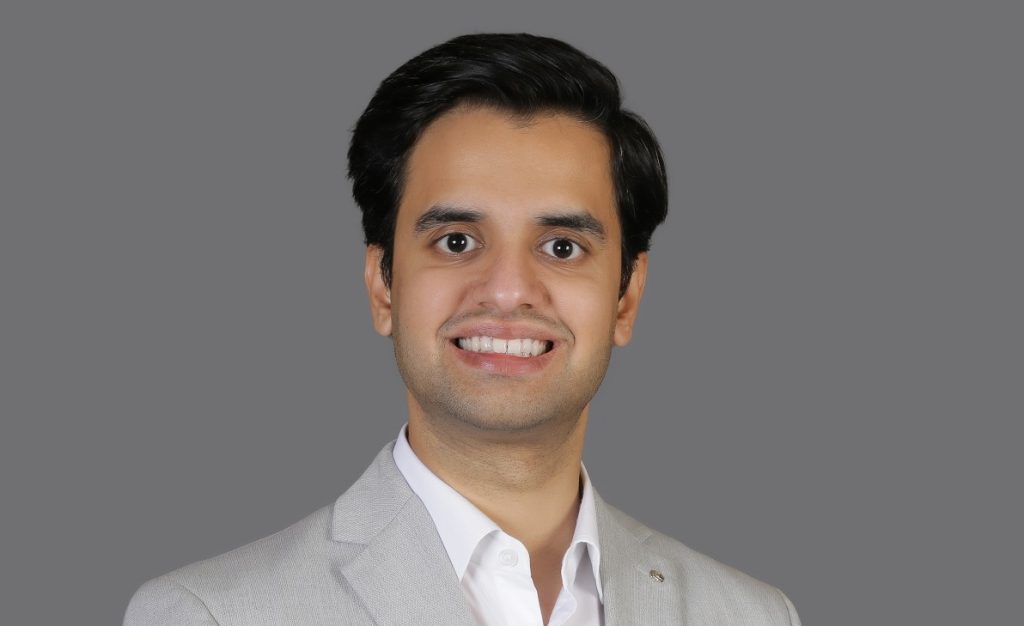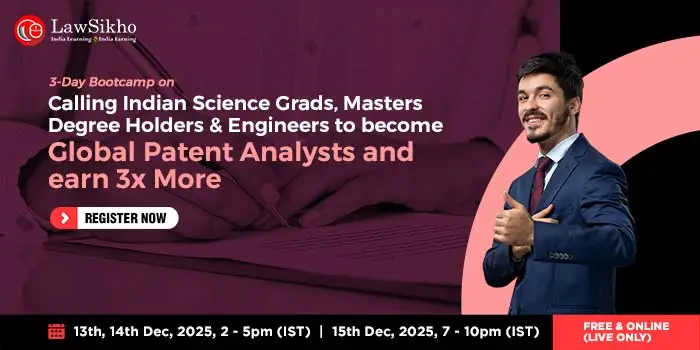This interview has been published by Anshi Mudgal and The SuperLawyer Team
Coming from a background in Science from Hindu College, University of Delhi, what inspired you to pursue a career in law? How has your technical background influenced your approach to complex commercial or infrastructure disputes?
As a first-generation lawyer, I often say that I did not choose law, law chose me. Growing up, I was deeply influenced by my grandfather, who fought legal battles for decades to protect our ancestral land. His relentless perseverance, even against an unresponsive system, left a profound impact on me. By the time I graduated in Science from Hindu College, I had already seen how the law could be both an obstacle and a tool for justice.
My scientific training gave me a structured way of thinking. In Science, you learn to analyze problems by breaking them down into fundamentals. That has greatly helped me in disputes involving infrastructure and complex commercial contracts, where one must go through technical details like engineering reports, financial data, regulatory compliances, and present them in a manner that is both legally persuasive and technically accurate. It allows me to approach my cases not just as a lawyer, but as someone trained to understand the “nuts and bolts” of technical issues.
It has been an interesting journey, from solving arithmetic problems and arriving at ‘LHS = RHS’ to addressing complex questions of law and concluding with ‘Hence, this SLP’.
In the early stages of your career, you worked with various senior judges and advocates. How did these experiences shape your approach, and which lessons from that time have had a lasting impact on your professional philosophy?
I had the privilege of clerking with Justice A.K. Sikri at the Supreme Court and Justice Siddharth Mridul at the Delhi High Court. Observing them up close taught me two invaluable lessons: the importance of clarity, and the importance of compassion. Justice Sikri had an extraordinary ability to simplify the most complex constitutional questions, and Justice Mridul always emphasized the human element in adjudication.
Later, when I began working with senior advocates and counsels at the Supreme Court, I saw how preparation and integrity defined good lawyering. One lasting lesson I carry is that courts are not swayed by theatrics, they are swayed by sincerity and substance. These experiences shaped my professional philosophy, that law is not just about winning cases, but about ensuring justice is meaningfully served.
What motivated you to establish an independent practice, and what hurdles did you face while launching your chambers during COVID? How did you overcome them, and what was your vision for the practice?
The decision was born partly out of necessity and partly out of conviction. During COVID, the legal profession itself came to a halt. Many colleagues struggled, and I realized that if I wanted to carry forward my vision of a client-centric and socially conscious practice, I had to build something of my own.
I started my chambers quite literally from one room in my home (with immense gratitude to my parents who allowed me to turn it into an office) with files stacked in the boot of my car. The hurdles were immense, no physical hearings, clients uncertain about the future, and the financial strain of running an independent practice in such times. But adversity also brought clarity. I invested in technology, conducted virtual hearings, and slowly built a team that shared the same values of hard work and service. My vision was, and remains to create a Chambers that combines courtroom advocacy with policy thinking, and where every matter, whether commercial or public interest, is handled with the same dedication.
You have handled complex commercial disputes and arbitration, including cross border infrastructure matters and international arbitration, across areas such as employment law and customs law. Can you share some major challenges you faced in a complex arbitration case and the unique difficulties it presented?
One of the most challenging arbitrations I handled involved a cross-border infrastructure project. The difficulty lay not just in the scale, but in the diversity of the issues, technical construction delays, regulatory clearances, and overlapping jurisdictional laws.
The unique challenge was coordinating with multiple stakeholders, engineers, financial experts, and foreign legal teams, while presenting a coherent case before an arbitral tribunal presided over by a retired Supreme Court judge. It taught me that arbitration advocacy requires more than just legal arguments, it demands the ability to understand complex technical data into a persuasive legal narrative.
You have demonstrated a commitment to advancing legal discourse and contributing to scholarly debate. How do you balance active practice with legal writing and academic contributions?
For me, writing is not separate from practice, it is complementary. Courtroom advocacy is about the urgency of the present; academic writing is about reflecting on the future. Balancing both is difficult, but I make time because writing forces me to step back and critically examine the jurisprudence I am part of. Recently, I have also begun teaching law to students and interns, a pursuit I deeply enjoy, as it allows me to give back to the fraternity while shaping the next generation of lawyers.
During the pandemic, for instance, I wrote extensively on the importance of impartiality in arbitrations and timelines in insolvency laws. These writings later informed some of the arguments I made in court. In a way, legal writing sharpens my practice, and practice keeps my writing, whether it’s articles, blogs, or pleadings, grounded in reality.
Clearing the Advocate-on-Record exam on the first attempt is a remarkable achievement. What were your preparation strategies, and what primary responsibilities come with being an AOR?
The AOR exam is as much about discipline as it is about knowledge. I prepared with the belief that procedural law is the backbone of effective litigation. My strategy was simple: treat every question as a live brief. I wrote my answers as if I were filing in court or briefing a Senior Advocate. That practical approach helped me clear the exam on the first attempt.
The responsibility of being an AOR is immense. You are the face of your client before the Supreme Court and a bridge between the Registry and the Hon’ble Judges, not just in argument, but in procedure. You are responsible for ensuring filings are correct, deadlines are met, pleadings are true and that clients receive the highest level of professional care. It’s a trust that must never be broken.
How has the arbitration landscape in India evolved over the last decade? With the advent of technology, what changes do you see in Supreme Court litigation strategies post-COVID?
Over the last decade, arbitration in India has been projected as having matured from an ‘alternative’ mechanism to the preferred mode for commercial disputes, with a legal framework aligning with international standards.
However, the ground reality is far more complex. Arbitration has, in practice, become less formal, yet more vulnerable to judicial intervention at almost every stage. In one matter I argued before the Supreme Court, the Arbitral Tribunal, the Single and the Division Bench of the High Court, each gave separate findings every time a cross appeal was filed by the parties, resulting in six different outcomes before the case finally reached the Supreme Court. This not only delays justice but also makes arbitration extremely costly and cumbersome. Increasingly, I see my clients preferring to opt out of arbitration clauses altogether, choosing and trusting Courts as their primary forum for dispute resolution, driven largely due to the greater efficiency brought in through the Commercial Courts Act.
Post-COVID, technology has changed Supreme Court litigation in profound ways. Virtual hearings, digital filings, and e-briefs are now routine. This has enhanced accessibility and opened new opportunities. Lawyers today can complement their oral advocacy with strong digital advocacy, while clients too can easily attend and witness hearings in real time from anywhere in the world, ensuring greater transparency and participation.
What has been the most challenging matter you have handled, and how did you navigate it? You have also worked extensively in animal welfare, environmental law, and public interest litigation. What motivates you to take up these cases?
One of the most challenging yet fulfilling matters I handled was Jaggo v. Union of India, 2024 SCC OnLine SC 3826, which I argued before the Supreme Court on behalf of the Appellant. The case involved a woman Safai-Karamchari, who had been working with the Central Water Commission for over two decades, as a so-called part-timer. Despite her long service performing essential duties, her plea for regularisation was rejected not only by her employer but also by CAT and the Delhi High Court. To make matters worse, she was illegally terminated, even though she was the sole breadwinner of her family, surviving on a meagre salary of just ₹4,000 per month.
I decided to take up her case pro bono, moved by her plight and the larger issue of systemic exploitation of temporary workers. The challenge was immense, not only did I have to defend her against three concurrent adverse findings, but I was also pitted against the office of the Additional Solicitor General (ASG). But the Hon’ble Supreme Court heard me patiently, and it was deeply encouraging to see the Court give weight to every argument raised by me in Court.
Ultimately, the Supreme Court held that such long-standing service warranted regularisation rather than termination, and that arbitrary dismissals without cause, violated natural justice. Drawing from constitutional principles under Articles 14 and 16, as well as international labour standards and comparative jurisprudence, the Court delivered a landmark judgment that has since been widely relied upon across the country to protect the rights of temporary and contractual workers.
For me, this case reaffirmed why I chose litigation. It was an uphill battle against the odds, but it showed me that with persistence, empathy, and conviction, the law can restore dignity and transform lives.
I’ve also had the privilege of being appointed as amicus curiae by the Hon’ble Delhi High Court to represent victims/ prosecutrix in POCSO cases, an experience that has deepened my commitment to matters of public interest and justice.
How do you balance your personal life with such demanding professional responsibilities, and how do you manage stress and maintain personal well-being?
Honestly, balance is not always easy. The legal profession demands long hours and deep emotional investment. What helps me is grounding myself in simple things, spending time with family, unwinding with my office colleagues, catching up with my close circle of friends, and taking out time to travel with them. These moments keep me centered amidst the demands of practice.
I’ve realised balance in this profession is a constant work in progress. The long hours and high stakes can be demanding, so I make a conscious effort to attend therapy and stay grounded, whether by taking out time for myself, slowing down when needed, or ensuring I maintain a non-toxic and supportive environment around me.
I try different ways to manage the stress that inevitably comes with the job, but what keeps me going is focusing on the parts I truly enjoy, being on my feet in Court. That’s where I feel most alive. After all, we lawyers live to hear the three words, ‘Issue Notice. Stay’.
Get in touch with Udian Sharma –




